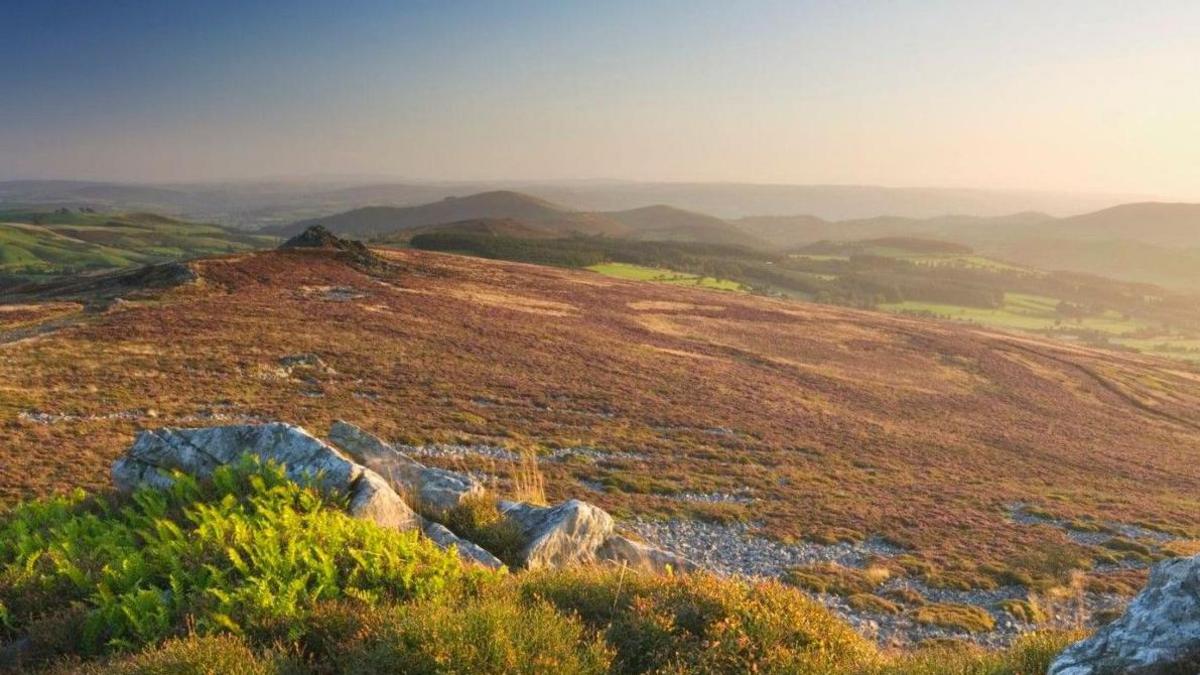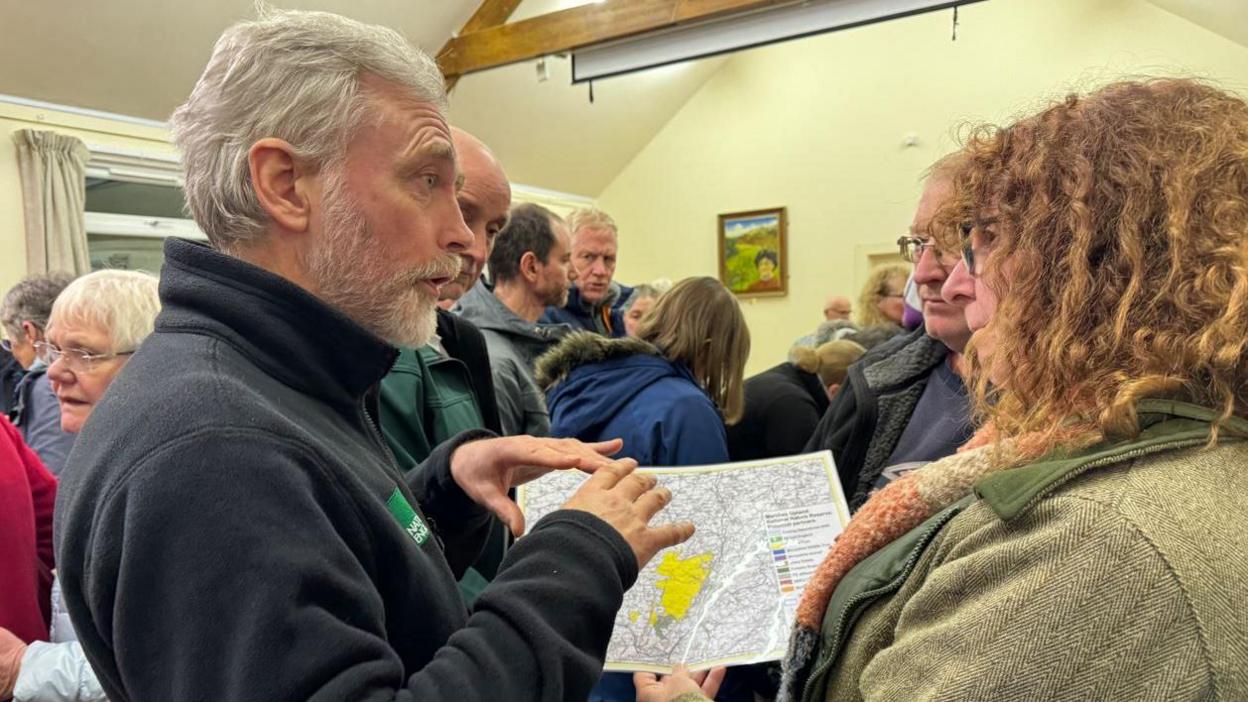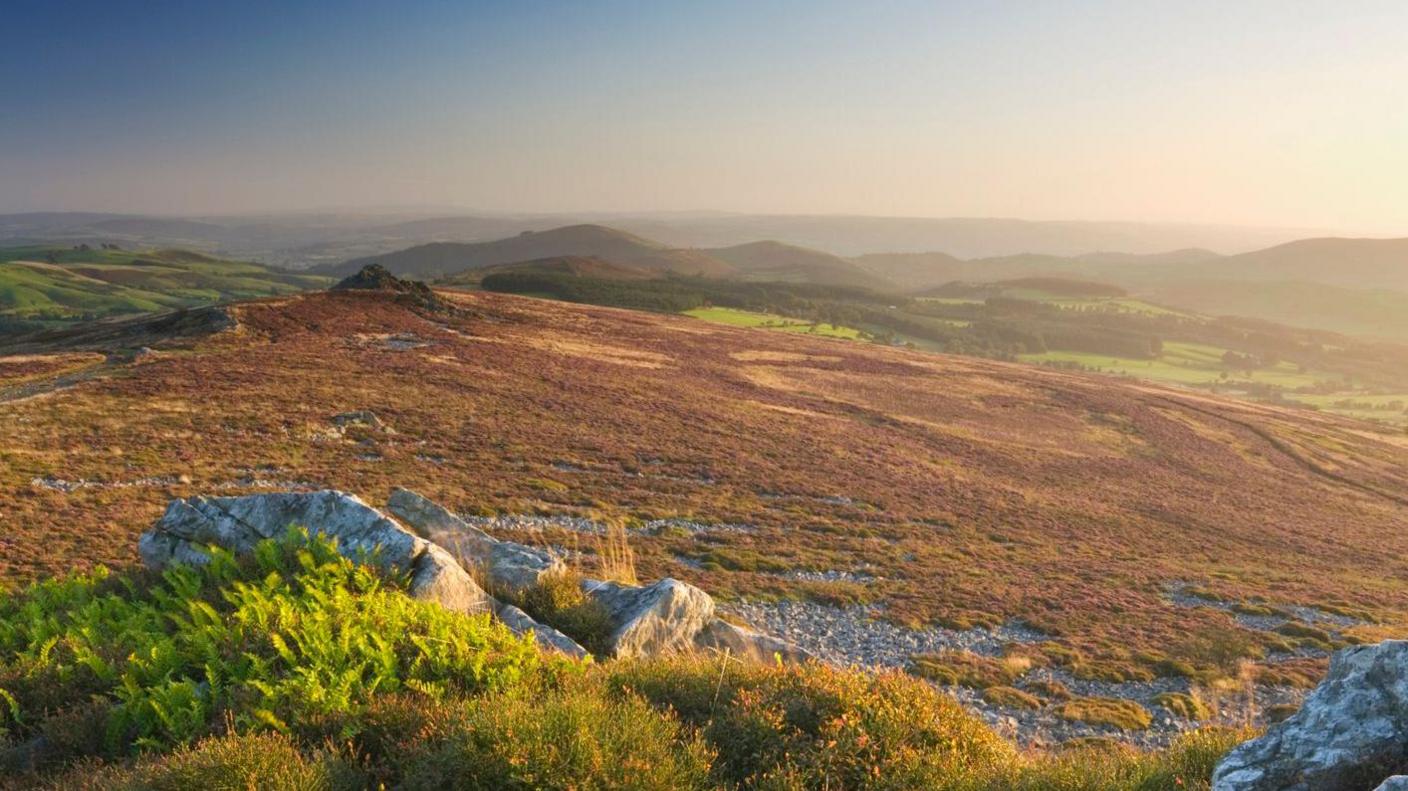New national nature reserve welcomes rare wildlife

The expanded nature reserve is more than three times the area of the original Stiperstones reserve
- Published
A new national nature reserve is being launched, which will see more than 1,500 hectares (3,700 acres) of rare habitats protected, Natural England has said.
The Stiperstones Landscape reserve, more than three times the area of the original reserve, would capture carbon, manage flood risk and improve water quality, the government-funded body said.
The area in Shropshire brings together six organisations to safeguard heathland, ancient woodland, bogs and acidic grasslands on the edge of the England-Wales border.
It forms part of the King's Series of National Nature Reserves, created to honour King Charles III's coronation and long-standing environmental advocacy, Natural England said.
The series represented "the most significant expansion of England's National Nature Reserve (NNR) network in a generation", it added, with 25 new reserves planned by 2027.
There are 224 NNRs in England, covering a total area of more than 116,000 hectares (286,642 acres).
Over 1,560 hectares of rare habitats have been safeguarded in the Stiperstones conservation project alone.
'Critical actions'
The reserve combines existing sites with more than 1,100 hectares (2,718 acres) of additional managed land, forming a "unified sanctuary for threatened wildlife and rare plant species", the body said.
Tony Juniper, chairman of Natural England, said that enhancing and expanding "nature rich landscapes is one of the most critical actions we must take to achieve our stretching environmental targets".
He added collaboration would protect "the upland heath and ancient woodland conserving rare species while also creating more opportunities for local people to experience the joy of nature first hand".
The other five organisations involved in the project are Forestry England, The Linley Estate, Shropshire Council, Shropshire Wildlife Trust and Middle Marches Community Land Trust.
Dr Richard Keymer, chairman of the community land trust, said larger areas of land managed for nature would make them more resilient "in the face of a changing climate".
Visitors can explore the reserve's habitats and experience views across the landscape through existing footpaths and bridleways, with the Bog Visitor Centre providing educational resources.
The reserve offers opportunities for scientific research, environmental education and outdoor recreation.
Rare wildlife, including the bilberry bumblebee, which depends entirely on bilberry flowers for nectar and pollen, are expected to receive greater protection through the creation of the expanded reserve.
Get in touch
Tell us which stories we should cover in Shropshire
Follow BBC Shropshire on BBC Sounds, Facebook, external, X, external and Instagram, external.
- Published8 February 2024

- Published7 February 2024

- Published24 January 2024
